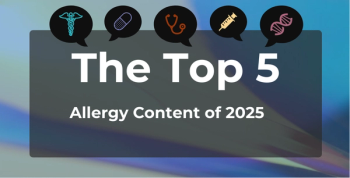
Diabetes Medication Costs, Utilization Differed by Medicaid or Marketplace Enrollment
New data show that Medicaid enrollees with diabetes in Colorado have greater access to new medications and incur less associated costs compared with patients with Marketplace plans.
Among patients with
Findings, published in
In 2017, the estimated national cost of diabetes was $327 billion, and as the prevalence of diabetes grew in recent decades, so too have antidiabetic medication prices.
Although the increasing cost of insulin has garnered
“Prices for noninsulin diabetes medications increased at a faster rate than prices for insulin products (76% vs 50%) during that period,” they added, noting insurance coverage rules can also impact patients’ access to antidiabetic medication and supplies.
It is estimated that approximately 1.9 million individuals with diabetes are enrolled in Medicaid and Marketplace insurance plans following the implementation of the Patient Protection and Affordable Care Act (ACA) in 2010.
To evaluate the utilization patterns and costs of prescription drugs to treat diabetes among low-income individuals with Medicaid and patients with Marketplace insurance, investigators assessed deidentified information from the Colorado all payer claims database (APCD) merged with income data from the state’s Medicaid and Marketplace programs.
All individuals included were between the ages 19 and 64 and had incomes between 75% and 200% of the federal poverty level. Drug utilization was measured via documentation of prescription drug fills while drug costs were defined as total and out-of-pocket costs.
Of the individuals included in the study, 20,245 (88.8%) patients were eligible for Medicaid and 2543 (11.2%) were eligible for Marketplace plans. Data were collected between 2014 and 2015. Those eligible for Marketplace plans tended to be older while Medicaid-eligible patients were more likely to be female.
Analyses revealed:
- Medicaid-eligible patients were significantly more likely than Marketplace-eligible patients to fill prescriptions for dipeptidyl peptidase 4 inhibitors (adjusted difference, −3.7%; 95% CI, −5.3 to −2.1; P < .001) and sulfonylureas (adjusted difference, −6.6%; 95% CI, −8.9 to −4.3; P < .001).
- Overall rates of insulin use were similar in the 2 groups (adjusted difference, −2.3%; −5.1 to 0.5; P = .11).
- Out-of-pocket costs for noninsulin medications were 84.4% to 95.2% lower and total costs were 9.4% to 54.2% lower in Medicaid than in Marketplace plans.
- Out-of-pocket costs for insulin were 76.7% to 94.7% lower in Medicaid than in Marketplace plans, whereas differences in total insulin costs were mixed.
- The percentage of months of apparent active medication coverage was similar between the 2 groups for 4 of 5 drug classes examined, with Marketplace-eligible patients having a greater percentage of months than Medicaid-eligible patients for sulfonylureas (adjusted difference, 5.3%; 95% CI, 0.3%-10.4%; P = .04).
“The low out-of-pocket costs may reflect the better financial protection provided by Medicaid compared with subsidized private insurance (all of the Marketplace enrollees likely qualified for cost-sharing reductions under the ACA),” researchers hypothesized.
Despite some concerns raised by policy makers regarding the scope of Medicaid coverage compared with private insurance, results of the current analysis showed “this patient population with low income and at high risk of negative health outcomes appeared to have better access to newer (and more expensive) medications in Medicaid than in Marketplace plans and less financial burden in filling those prescriptions.”
The Colorado APCD did not include substantial information on race and ethnicity and, as such, researchers were unable to assess whether care patterns differed across subgroups, marking a limitation to the study. The data included were also from 2014 and 2015, meaning it may not reflect current pricing or utilization patterns. Information included was also only representative of a single state.
Overall, the cost differences illustrated can have “important insights for policy makers considering changes to the ACA or Medicaid policy that might impact adults with chronic conditions such as diabetes and quantifies some of the current cost savings associated with Medicaid drug policies,” authors concluded.
Reference
Khorrami P, Sinha MS, Bhanja A, Allen HL, Kesselheim AS, and Sommers BD. Differences in diabetic prescription drug utilization and costs among patients with diabetes enrolled in Colorado marketplace and Medicaid plans, 2014-2015. JAMA Netw Open. Published online January 14, 2022. doi:10.1001/jamanetworkopen.2021.40371
Newsletter
Stay ahead of policy, cost, and value—subscribe to AJMC for expert insights at the intersection of clinical care and health economics.







































